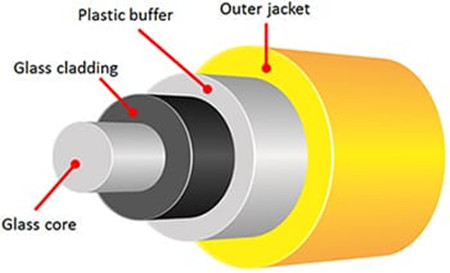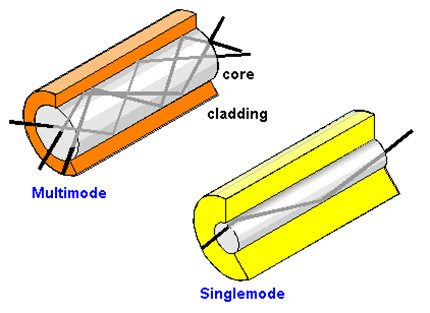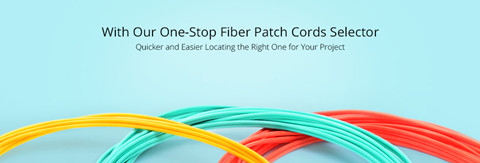Nearly 40 years ago, fiber optic cable was made and installed, and it is still used today. Newer cables now being made are of even better quality. Compared to traditional copper wiring (commonly found in homes), fiber optic cables offer much higher data rates and are capable of reaching longer distances. This flexible and durable fiber is most commonly used to transmit light for a wide range of applications like visible light displays, sensors, and high-speed communications networks, which will be discuss in this article.
Fiber Optic Cables for High-Speed Applications
Although fiber optic cable is made of hair-thin glass or plastic to a desired length and diameter, inch for inch it’s stronger and steal and more durable than copper. For more detailed information about fiber vs copper, you can see a blog entitled “Why is the fiber optic technology better than copper?”. What’s more, there is no theoretical lifetime for optical fiber. And other key features of optical fiber are its electrical insulative properties, cost effectiveness, and improved security of the information being transmitted.

In terms of fiber optic cable construction, optical fibers have a transparent core which is surrounded by a transparent cladding material with a lower index of refraction, which helps to keep light in the core see in the above picture. Due to some leakage of light over a distance, attenuation is a result of the decrease in intensity of the light beam as it travels through the optical fiber. Attenuation is the most important limiting factor in the transmission of light signals (especially over long distances), although dispersion of the light is another factor that affects performance.
Single Mode and Multimode Fiber Optic Cables
Over the years, significant research and development has been invested into improving the general performance of fiber. Most are continuously improved upon to further minimize attenuation/loss and dispersion over longer distances and there are many subsets that apply to very specific network and performance standards. However, the two primary categories are single mode and multimode optical fibers.
Single mode fiber patch cables have a smaller diameter core (9µm) that only allows for one mode of light to propagate. As a result, the amount of light leakage decreases and minimizes the attenuation, allowing the signal to travel longer distances. Typically, single mode fiber is used for distances beyond several hundred meters by telecom and CATV service providers, government agencies, and major enterprises and universities with large campuses and networks.

Multimode optical fibers have a larger diameter core (50µm or 62.5µm) than single mode fibers, which allows for the propagation of multiple modes of light. The amount of light that passes through the core is increased, thus enabling a higher amoutn of information to pass through at any one time. Because of the higher rates of dispersion and attenuation, the signal quality is significantly reduced over longer distances, so multimode fibers are typically deployed for short distance applications within data centers, Local Area Networks (LAN) and other similar networks. Similar to single mode and other communication fibers, subsets of mutimode fiber types exist on the basis of construction/makeup (step-index, graded-index, etc) and for varying bandwidth rates over specific distances (OM2, OM3, OM4).
FS.COM Fiber Optics
Besides the single mode and multimode fiber optic cables, there are many standard and specialty for fiber optic cables existed for use within communications networks. For high-speed networking services, fiber optic network offers much higher internet speed and supports longer transmission distance, which makes it the clear choice for what’s now and what’s next.

FS.COM has been providing custom lengths of optical fiber to all of our customers for network simulation, latency, and system demonstration applications. All of our high-quality fiber cable assemblies such as Patch Cords, Pigtails, MCPs, Breakout Cables are ordered at lower price. Additionally, fiber optic cables are also divided by different connectors like LC to LC patch cord, ST-LC patch cord, SC to LC patch cable and so on. If you have any interest of our products, you can contact our experienced team for a free consultation.

Thanks for sharing structured cabling companies in dubai
ReplyDelete